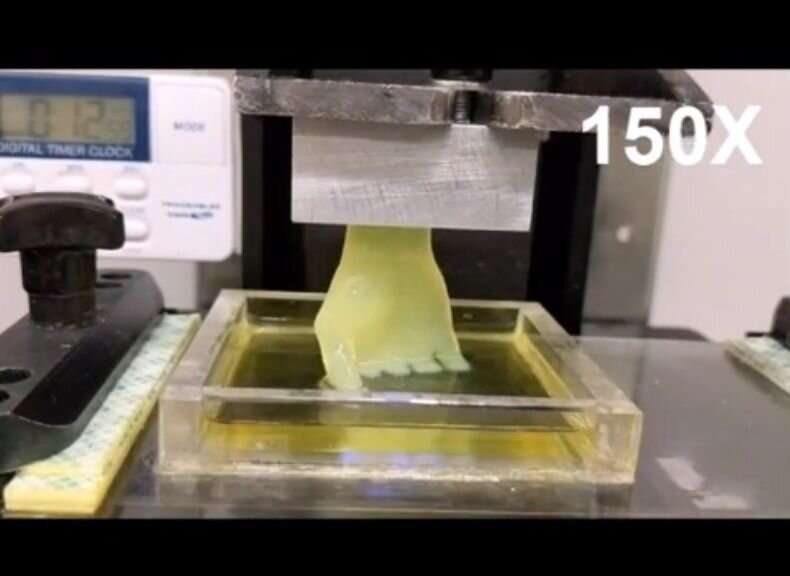Home » Health News »
Rapid 3D printing method moves toward 3D-printed organs

It looks like science fiction: A machine dips into a shallow vat of translucent yellow goo and pulls out what becomes a life-sized hand.
But the seven-second video, which is sped-up from 19 minutes, is real.
The hand, which would take six hours to create using conventional 3-D printing methods, demonstrates what University at Buffalo engineers say is progress toward 3-D-printed human tissue and organs—biotechnology that could eventually save countless lives lost due to the shortage of donor organs.
“The technology we’ve developed is 10-50 times faster than the industry standard, and it works with large sample sizes that have been very difficult to achieve previously,” says the study’s co-lead author Ruogang Zhao, Ph.D., associate professor of biomedical engineering.
The work is described in a study published Feb. 15 in the journal Advanced Healthcare Materials.
It centers on a 3-D printing method called stereolithography and jelly-like materials known as hydrogels, which are used to create, among things, diapers, contact lenses and scaffolds in tissue engineering.
The latter application is particularly useful in 3-D printing, and it’s something the research team spent a major part of its effort optimizing to achieve its incredibly fast and accurate 3-D printing technique.
“Our method allows for the rapid printing of centimeter-sized hydrogel models. It significantly reduces part deformation and cellular injuries caused by the prolonged exposure to the environmental stresses you commonly see in conventional 3-D printing methods,” says the study’s other co-lead author, Chi Zhou, Ph.D., associate professor of industrial and systems engineering.
Source: Read Full Article



